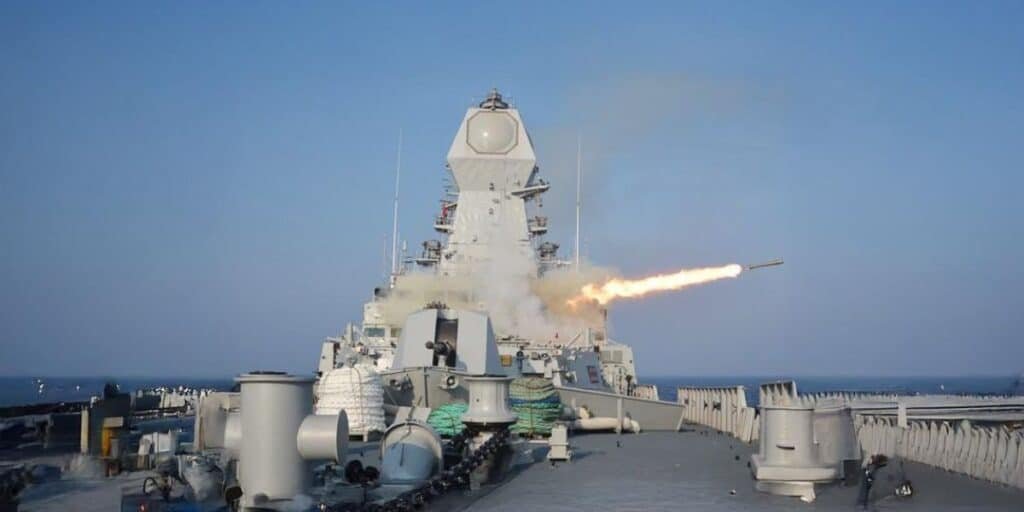Indian armed forces under Modi’s government are signalling their operational readiness for escalatory naval engagements, hindering maritime trade routes, with clear overtones aimed at Pakistan, pushing the region further into instability.
Indian Navy has completed key user trials of its new Extended Range Anti-Submarine Rocket (ERASR), firing 17 rounds from INS Kavaratti and meeting “all specified objectives, range, electronic fuze, and warhead function,” according to an Indian Navy official statement.
In addition, New Delhi signed an agreement with Bharat Electronics Limited to roll out the National Maritime Domain Awareness (NMDA) network, tying satellites, radars, and naval sensors into a unified real-time grid.
Tensions between the two neighbours have stayed high since the Pahalgam attack, which triggered air strikes and brought both nuclear-armed states to the brink of full-fledged conflict.
Each new weapon program now feeds a cycle of suspicion, continuous struggle of balancing the adversary, and the latest naval moves from the Indian military advocate a shift from a policy of coastal defence to power projection deep into the Arabian Sea.
For Pakistan, secure sea lanes are the cornerstone of the China-Pakistan Economic Corridor and the wider Blue Economy. Any bid by India to dominate the narrow shipping lanes to Gwadar or the Strait of Hormuz would put vital trade routes and hard-won energy supplies at risk. “Maritime security is no longer an option; it is an economic lifeline,” a senior Pakistani security analyst noted.
Indian officials say ERASR will give them “greater punch in shallow waters,” a clear reference to maritime zones where Pakistani naval vessels patrol. Maritime analysts in Islamabad view the NMDA project as more than data sharing; it is an “intelligence web designed for pre-emptive tracking and engagement,” potentially turning routine patrols into escalatory flashpoints. As one analyst noted, “This is not defensive preparation. This is escalation.”
India deceptively frames these steps as indigenous progress, but in reality, they tilt the regional balance at sea and threaten global shipping lanes that pass close to Pakistan’s coast.
With each side modernising in rapid succession, the Indian Ocean is becoming the new centre of gravity in the long-running rivalry, one that now extends beneath the waves and into the digital realm of sensor-driven warfare.
Read more: X exposes Indian government’s request to block Reuters account






